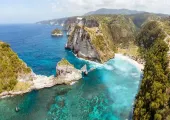Life and death, Lop Nur, visit ancient Loulan
I. Introduction to Lop Nur
Lop Nur used to be a water area of 3000 square kilometers, known as the second largest salt water lake in China. It is a good place for birds and animals to live, and a source of life for lop people to survive. However, due to the climate change and the aggravation of human activities, Lop Nur dried up year by year. In 1973, Lop Nur Lake water had completely disappeared. In the past, the vast lake had become a vast wilderness, leaving only a big ear composed of ancient lake levees, listening to the strange wind and sand on the eternal wilderness day and night.
It was also one of the earliest places where human activities took place in Xinjiang. It gave birth to splendid ancient civilization. It is one of the political, economic and cultural centers in the western region and an important gateway connecting Eastern and Western civilizations on the ancient Silk Road.
Lop Nur, as a symbol of remoteness, desolation and mystery, has long been concerned by scientists and explorers, and yearned for by the majority of adventure lovers.
From the end of 19th century to the beginning of 20th century, Lop Nur left many footprints of scientists and explorers at home and abroad. Swede Explorer Sven Hedin and British explorer Stein all came to Lop Nur for "investigation"; in the 710s of 20th century, Comrade Peng Jiamu, a famous geographer and academician of Chinese Academy of Sciences, lost his way during his investigation in Ronan bank; in the 1990s, Xu Xiake, a famous Chinese explorer and contemporary "Xu Xiake" ”Yu chunshun died on his way through Lop Nur... All these make Lop Nur more mysterious and confusing.
The mystery of Lop Nur attracts people to explore. In the face of various Yadan, moon like barren landscape, full-blown salt crust, arched horizon and lost civilization, people will be intoxicated by its magnificent scenery, which is peaceful and rough. However, Lop Nur, the mythical sea of death, may not have a chance to get there in life for most people.
Welcome to the paradise of the brave, Lop Nur, to explore the mysterious region full of reveries and mysteries, to pursue the lost civilization and to realize the meaning of life.
II. Schedule
The basic route is as follows: starting from Dunhuang, along the Gobi Area in the east of Lop Nur, the route is to reach the lake center through the ear shaped ancient dike formed by the lake water drying up year by year, explore the ancient city of Loulan on the West Bank, cross Lop Nur from north to south, reach the ancient city of Milan on the south bank, go up the Tarim River which used to be the source of Lop Nur Nur, and reach Xinjiang by the Peacock River which used to be the source of Lop Nur Nur Nur Korla. Through this activity, we will lead you to explore the history and reality of Lop Nur one by one, and we believe you will gain a comprehensive, intuitive and profound experience of Lop Nur.
D1 Dunhuang assembly
Accommodation: Dunhuang
Welcome banquet, pre departure preparation meeting.
D2 Dunhuang - devil City Yadan
Accommodation: Geopark
In the morning, we visited Mogao Grottoes, Yueya spring, Mingsha mountain, etc.
After lunch, you can go along the Gobi road to the site of Yumen pass, one of the thirty-six places in the western region famous for saying "the wind never blows in the spring". Nearby, you can visit the great wall of Han Dynasty standing in the desert for thousands of years. After passing the Le river outside Yumen pass, you can go west along the ancient Shule River and enter the Lop Nur wasteland to enjoy the wonderful Yadan Geopark in the ghost city.
D3 the monument of Yadan pengamu, devil City, Kumtag Desert
Accommodation: Field
After Bayi spring, you will arrive at the third largest desert in Xinjiang, drive on the saline alkali lake basin formed by the precipitation and drying of Luobupo lake, arrive at Luobupo Town, refuel and add water for replenishment, and return to Luobupo town after investigation and shooting in yalandan, bailongdui. Go to the center of the lake through the big crossroads and enter the center of Lop Nur Lake. Feel the gray and boundless landscape of the lake like the moon. The picture of the vicissitudes of Lop Nur after the lake dried up. Enjoy the salt crust in full bloom at the bottom of the vast Lop Nur Lake, and the horizon in the center of the lake is like a bow.
D4 Kumtag Desert - Lake Center
Accommodation: Field
Drive on the saline alkali shell lake basin formed by the precipitation and drying up of Lop Nur Lake, arrive at Lop Nur Town, refuel and add water for replenishment, and return to Lop Nur town after investigation and shooting in Yalun, bailongdui. Go to the center of the lake through the big crossroads and enter the center of Lop Nur Lake. Feel the gray and boundless landscape of the lake like the moon. The picture of the vicissitudes of Lop Nur after the lake dried up. Enjoy the salt crust in full bloom at the bottom of the vast Lop Nur Lake, and the horizon in the center of the lake is like a bow.
D5 Lake Center Loulan Ancient City Longcheng Yadan
Accommodation: Field
Today is the soul and core of this activity, and it is the most shocking and unforgettable day. Loulan ancient country was a famous city-state country in the western regions before the 2nd century. After the 4th century, it disappeared suddenly and was not recorded. In the 7th century, Xuanzang of Tang Dynasty classified his journey to the west, and saw that Loulan country "has a solid city and no human life". In the 19th century, svenkhding found Loulan ancient country, and Loulan returned to the vision of modern civilization again. Loulan site is slightly square. The walls built with mud, reeds and branches are indistinct. Now there is a pagoda and several houses. Go north after Loulan ancient city, enjoy the sunset of Yadan in Longcheng, and camp near Yadan in Longcheng.
D6 Cultural Protection Station - ancient city of Milan - Ruoqiang
Accommodation: Ruoqiang
From north to south, it passes through Lop Nur and the ancient city of Milan. Milan was called the old city of Yixun in ancient times. The site mainly includes three parts: ancient Rongbao, Dongda temple and Xida temple. Gurongbao is a military fortress in the Tubo era. The city wall is more than 7 meters high. It is rammed with loess, willow and wheat straw. The wall is full of quicksand.
D7 Ruoqiang Luobu village Korla
Accommodation: Korla
You can take pictures at will when you pass through Tarim River, Populus euphratica forest, Taklimakan Desert, etc. Tarim River used to be the upstream water source of Lop Nur. Due to the increasing water consumption of human activities on both sides of the river, a reservoir was built on the river, and the river no longer flowed into Lop Nur, resulting in the year-on-year shrinkage of Lop Nur, and finally dried up. The smoke wave of Lop Nur can be felt vaguely in the reservoir area of Chiara reservoir. In recent years, researchers are exploring to re inject water into Lop Nur and reconstruct its ecology. Luobu people's villages show the primitive existence of Luobu life, and can be in close contact with the natural environment of harmonious coexistence of desert, river and Populus euphratica.
D8 Korla - Urumqi
Accommodation: Urumqi
Korla automobile Urumqi, check in Urumqi five star hotel, celebration banquet
D9 return by air or train, end of event.
Note: the above is the planned itinerary. Due to the physical condition, weather, road condition, vehicle condition, military control and other unforeseen factors of the participants, the itinerary may be adjusted to ensure the safety of the participants in the activity.
Trending Travelogues
Popular Trip Moments
Popular Travel Types
Popular Attractions
Popular Ranked Lists
Popular Destinations
Recommended Attractions at Popular Destinations













Site Operator: Trip.com Travel Singapore Pte. Ltd.






